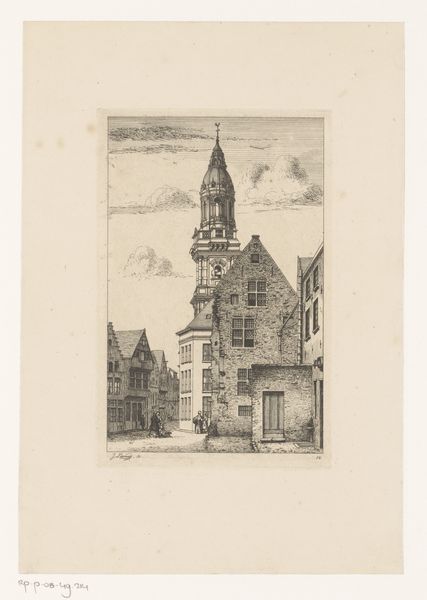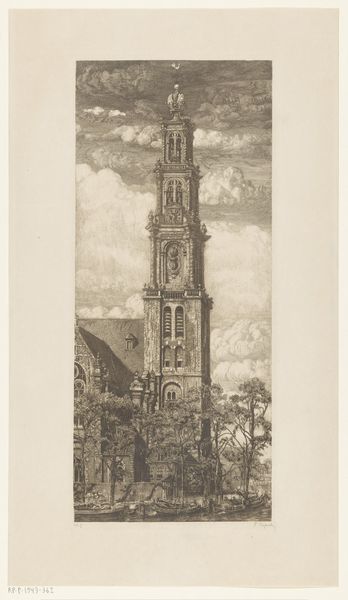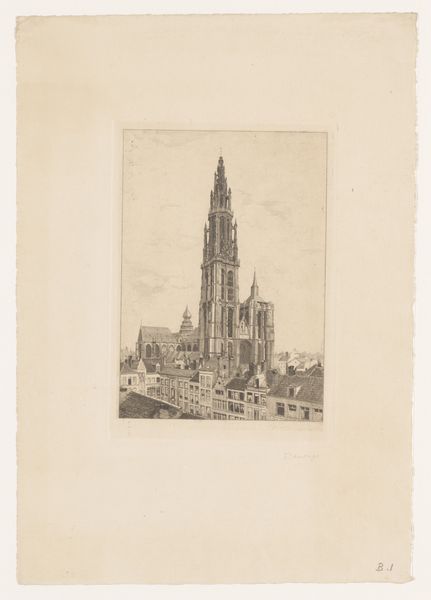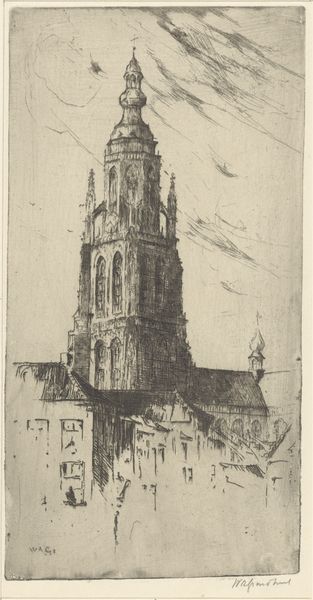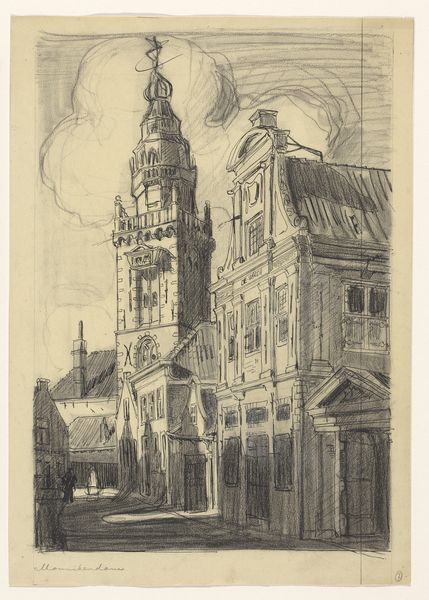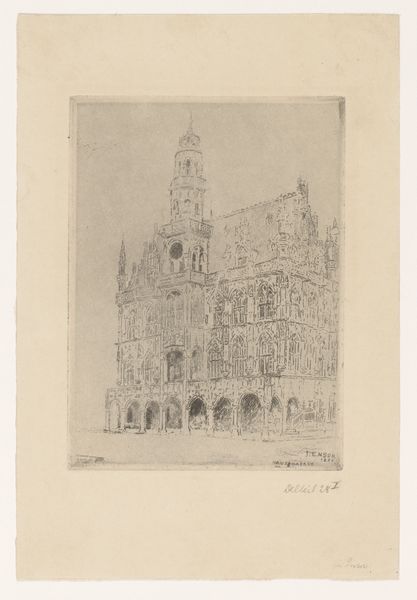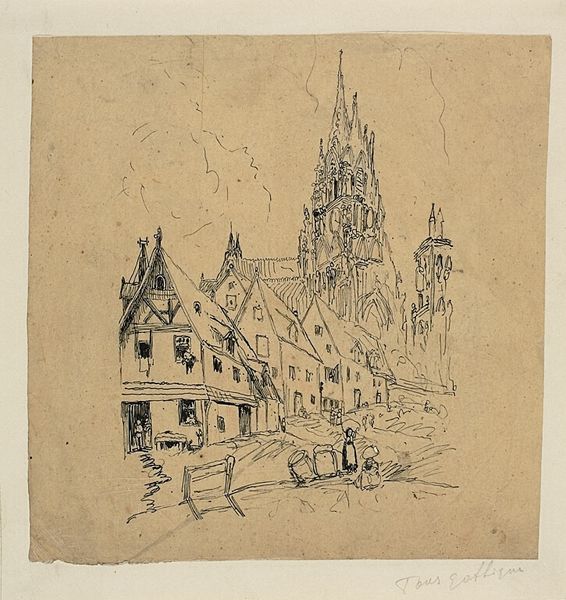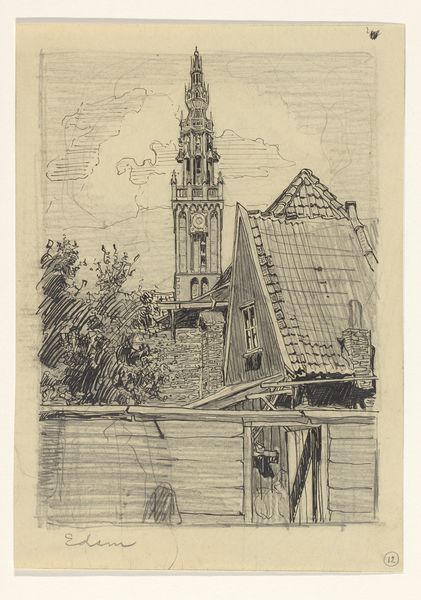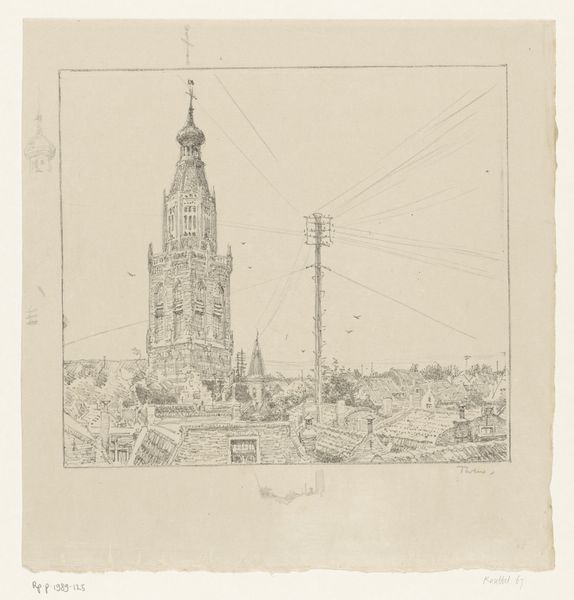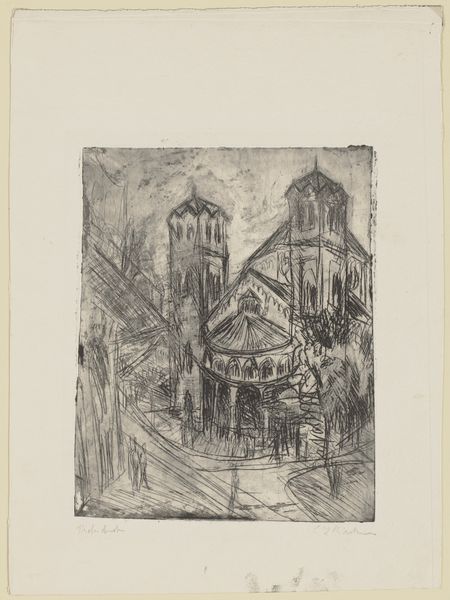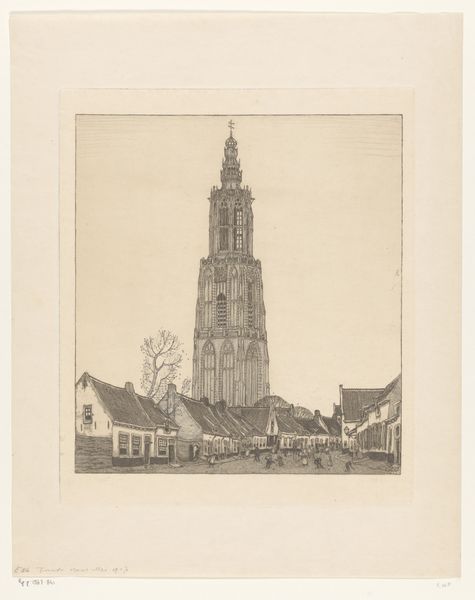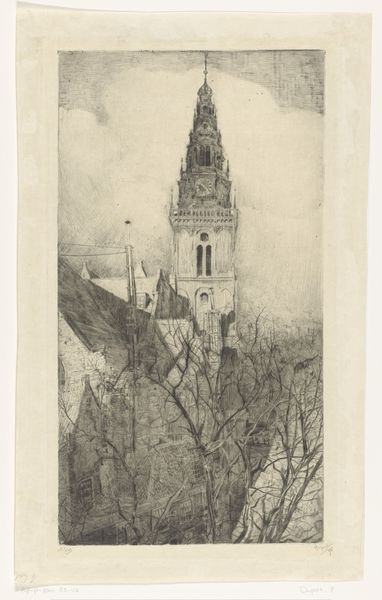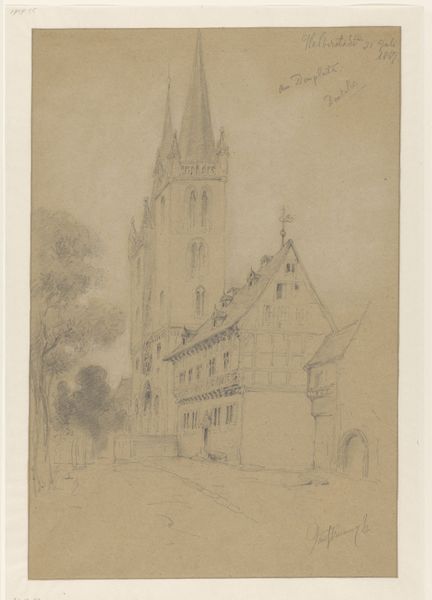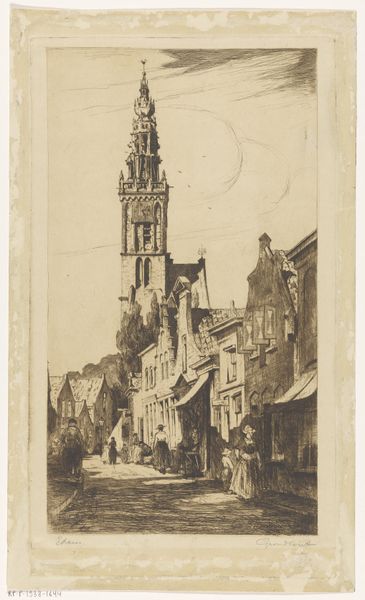
print, etching, architecture
# print
#
etching
#
landscape
#
etching
#
cityscape
#
architecture
Dimensions: height 147 mm, width 132 mm, height 184 mm, width 167 mm
Copyright: Rijks Museum: Open Domain
Curator: Standing before us is Pieter Willem van Baarsel's "Toren van Asperen," created in 1914. It's an etching, offering a glimpse into early 20th-century Dutch architecture. Editor: The sepia tones create a melancholic mood; there's an undeniable ghostly presence to it, almost as though we're peering through time. Curator: It's a striking example of how artists engaged with urban spaces, especially through printmaking. Baarsel focuses not just on the tower's architectural detail, but the wider public perception of monumental structures. These images become tools for shaping collective identity and memory. Editor: I'm curious about that interaction, specifically, the relationship between structure and the social life occurring beneath its shadow. Are those tiny figures merely illustrative or do they speak to something more? Curator: I see them as deliberately placed to contextualize the scale. People experiencing their environment, contributing to a broader social understanding of the artwork itself. I also wonder about his choice of etching - How does the process of transferring this to print contribute to our reading of the subject? Editor: Right. Etching often embodies a sense of permanence while simultaneously capturing fleeting moments. Is Baarsel presenting an idealization or critique of established authority, or maybe somewhere in between? Curator: I think he's exploring the tower as a landmark of its time. The lines don’t define so much as they suggest, allowing viewers space to bring their own interpretations, particularly considering what Asperen might have symbolized in 1914, as war approached. Editor: An interesting angle. The imposing yet fragile nature of the lines makes me consider patriarchal narratives associated with monumental buildings like towers and monuments. Curator: This resonates with the growing feminist discourses of the time which challenged those symbols of dominance. Thank you for sharing those compelling and insightful perspectives! Editor: Thank you; hopefully, these considerations offer all a more nuanced way to consider Van Baarsel’s "Toren van Asperen" when moving forward today.
Comments
No comments
Be the first to comment and join the conversation on the ultimate creative platform.
